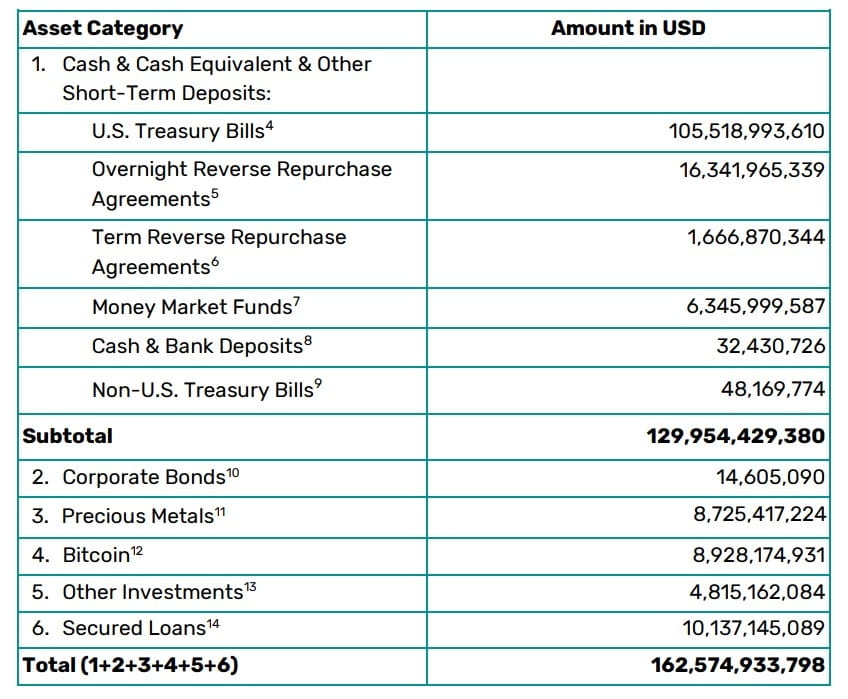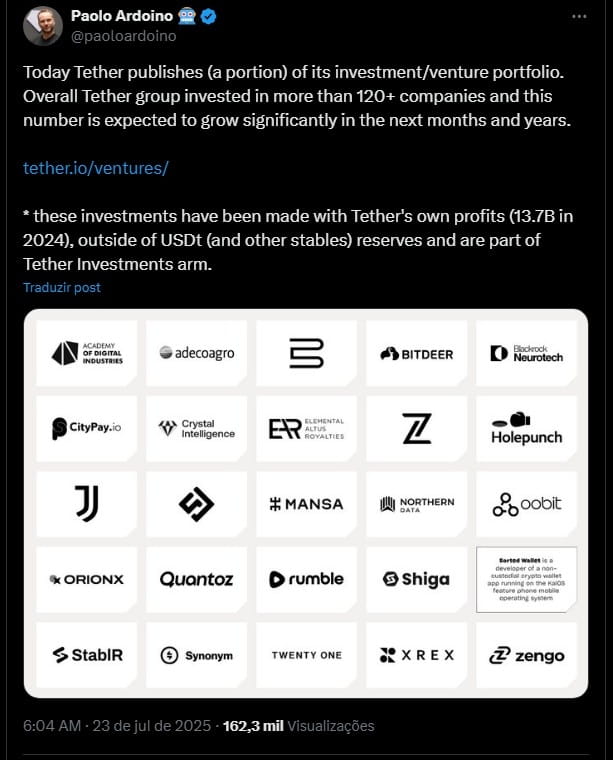Almost half of this profit is linked to the company's positions in gold and Bitcoin.

Paolo Ardoino, CEO of Tether. Source: Social media/Reproduction.
Tether, issuer of the USDT stablecoin, revealed this Thursday (31) a profit of $4.9 billion (R$ 27.4 billion) in the second quarter of 2025. The company's earnings reach $5.7 billion in the first half.
By comparison, oil companies Shell and Petrobrás made $5.58 billion and $6.21 billion, respectively, in the first quarter of this year.
Although Tether is benefiting from the strong profitability of U.S. Treasury bonds, nearly half of the profits are related to the rises in Bitcoin and gold, two assets that also back the USDT.
Tether continues to record billion-dollar profits in its operation
Notably, Tether points out that the supply of USDT grew by $13.4 billion in the second quarter of this year, allowing the company to reach a mark of 157 billion USDT in circulation.
Part of this growth is due to greater regulatory clarity from the U.S. government, including the enactment of the Genius Act this July.
The company's profits continue to attract market attention. In addition to the good yield from Treasury bonds, the company also benefited from the appreciation of Bitcoin and gold during the period.
“Tether’s profitability also highlights the strength of its business model.”
“Net profit in the second quarter of 2025 totaled approximately $4.9 billion, raising the total for the first six months of the year to $5.7 billion,” wrote Tether. “For the year-to-date, TIL [Tether International Limited] generated $3.1 billion in recurring profits, excluding contributions from mark-to-market of gold and Bitcoin, which added another $2.6 billion — further highlighting the operational strength and revenue consistency of the company.”
The company currently holds an exposure of nearly $130 billion in bonds, as well as $8.9 billion in Bitcoin and $8.7 billion in precious metals.

Details of Tether's assets. Source: Tether.
In the previous report, the company had $7.6 billion in Bitcoin and $6.6 billion in precious metals. Therefore, there was a growth of $1.2 billion and $2 billion, respectively, in these two sub-groups.
Tether continues investing in other areas of the market
In addition to these direct investments, Tether also has exposure in various other companies. This includes stakes in Juventus, Adecoagro, and Twenty One Capital (XXI).
According to Paolo Ardoino, CEO of Tether, the company has investments in over 120 companies.
“Today, Tether published (a part of) its investment/venture capital portfolio. In total, the Tether group has invested in over 120 companies, and this number is expected to grow significantly in the coming months and years.”

Paolo Ardoino shares Tether's position in other companies. Source: X.
“Leveraging the strength of its capital reserve and continuous profitability, Tether reinvested a substantial portion of its recent profits into long-term strategic initiatives,” the company commented in the quarterly report.
“The main initiatives include XXI Capital, investment in Rumble (including the development of the Rumble Wallet), reflecting Tether's focus on innovation in the areas of finance, data, and digital freedom. Within its global profit reinvestment strategy, the United States stands out as the main country, with about $4 billion already invested so far in the domestic ecosystem.”
Although it is an offshore company registered in the British Virgin Islands, Tether has been one of the main beneficiaries of changes in U.S. policy following the last elections.
